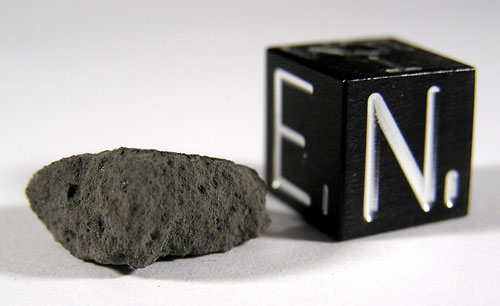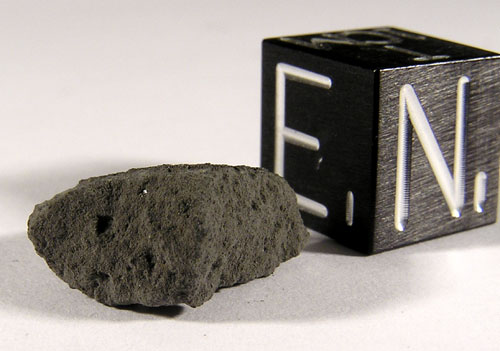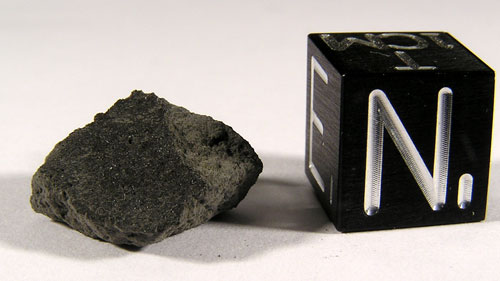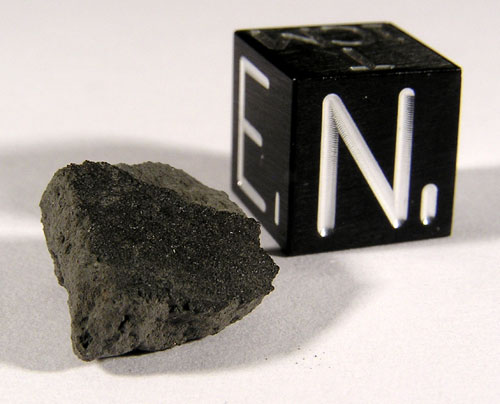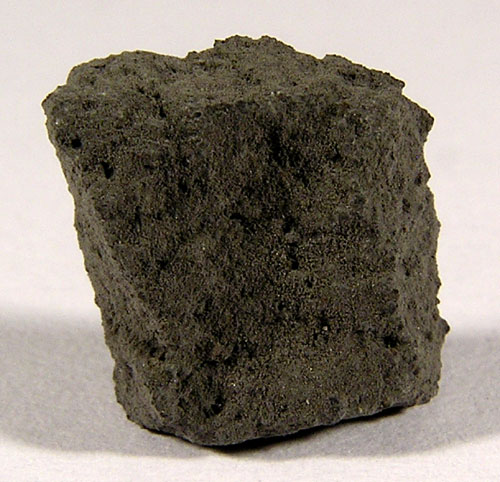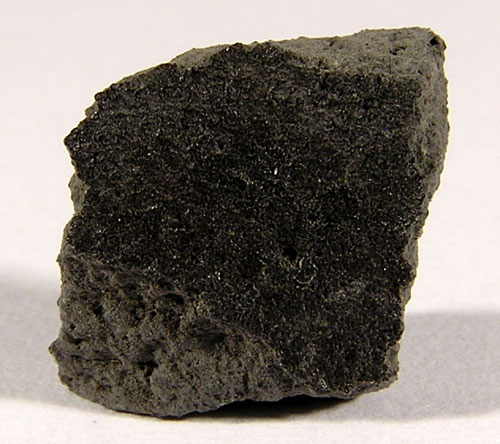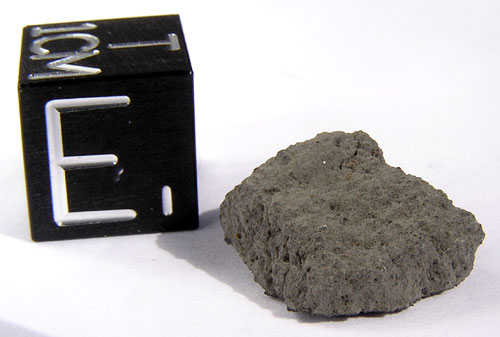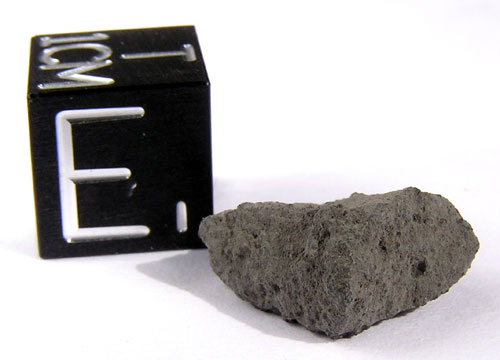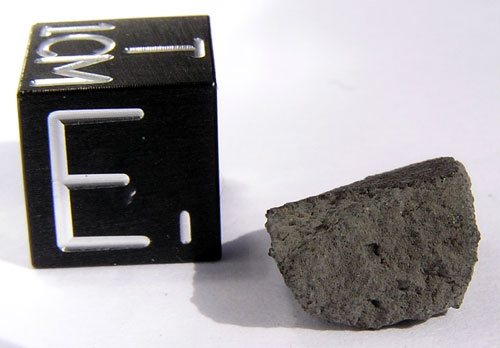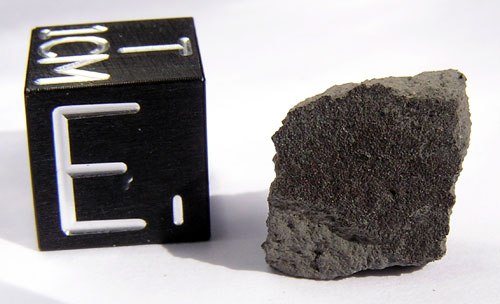


- Meteorites For Sale - Found A Meteorite? - Monthly Favourite - Meteorite Information - Classification List - Meteorite Collection - Media Centre - Home - Search - Site Map - Contact |
|
The Norwegian 'Moss' Meteorite - Preliminary Observations A new Norwegian meteorite which fell at 10:25am on July 14th, 2006 has been provisionally called Moss. A tentative classification was recently released on August 31st and it appears that this meteorite is a Carbonaceous Chondrite. Specifically, it's likely to be a CO3.5 with a Shock Rating of 2-3. Classification studies are on-going and this data will be refined over the next several months. On a quick visual inspection under 10x magnification of the crusted fragment below, it appears to be a relatively homogenous meteorite with a mid ash-grey colour. It is quite friable with a somewhat loose and extremely fine-grained 'sandy' like matrix with chondrules that are somewhat difficult to distinguish. There are some areas which show plucked or protruding chondrules. A conservative estimate in regards to the volume of chondrules would be about 50% but I would not be surprised to see it as low as 25%-30%. But reiterating again, they are extremely difficult to distinguish from the background matrix even under 10x magnification. Chondrule size would be approximately ≤0.5mm leaning towards a lower range of about 0.25mm-0.3mm. While it is quite difficult to see in hand, the photographs in particular also hint at what appear to be sporadic bleached chondrules and/or Calcium-Aluminium Rich Inclusions (CAI's). The Moss (Provisional) meteorite also seems to contain a significant volume of visible metallic iron/nickel, with most in very small grain sizes. Only the larger (≥0.5mm) are visible with the naked eye. Some metallic grains also have a slight golden hue which may indicate a small amount of Troilite (Iron-Sulphides/FeS) present in this meteorite. Most grains are more easily picked up by the camera during photographing and are also evident in the fusion crust using this method. The meteorite also has a considerable attraction to a magnet. The fusion crust is a thin and well developed with flight markings. It reflects the interior of the meteorite with areas of plucked chondrules and visible metallic iron/nickel. The crusted fragment below weighs 1.23g and is part of the Meteorites Australia Collection (MA.06.0043). UPDATE: October 2006 The Moss meteorite was classified in virtually record time! Officially, the classification has been determined to be CO3.5/3.6 with a Shock Rating of 2. The Weathering Level would vary between different specimens but is likely W0-W1. There is a Total Known Weight of just 3.76kg. The Meteoritical Bulletin abstract is presented below: Moss Østfold, Norway, ~59º26' N, ~10º42' E Fell July 14, 2006, ~10:20 hrs local daylight time (UT+2) Carbonaceous chondrite (CO3.5/3.6) History and physical characteristics: (G. Raade and K. Ødegaard, UOslo; M. Bilet, NorAS) At about 10:20 am on July 14, 2006, a bright fireball traveling SSE-NNW was witnessed by many people and a loud explosion and a rumbling sound was heard in the air above Moss and Rygge in south Norway, on the east side of the Oslofjord. Shortly after, a small meteorite was heard to land on an aluminum sheet and was recovered. Extensive searches in the area have resulted in the recovery of a total of 5 stones (Table x). Note that light rainfall occurred in the area on July 29, 30, and 31.
M-S-T: Mass divided between Michael Mazur, Bjørn Sørheim, and
Eric Twelker.
Photos in Direct Natural Sunlight
Back to 'The Unusual Meteorites Features Page' menu...
|
